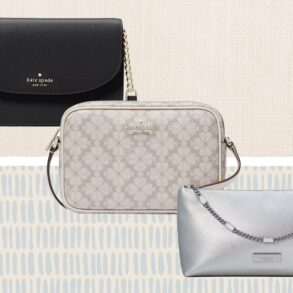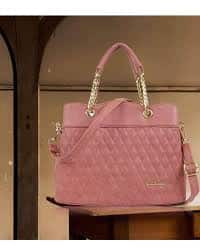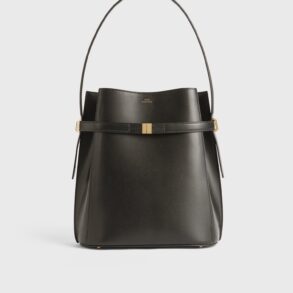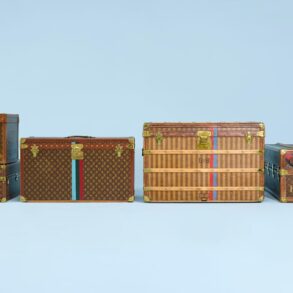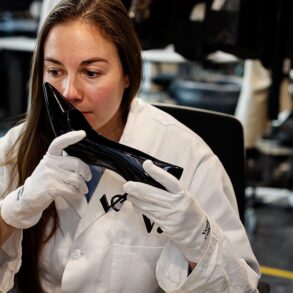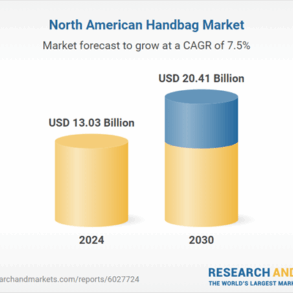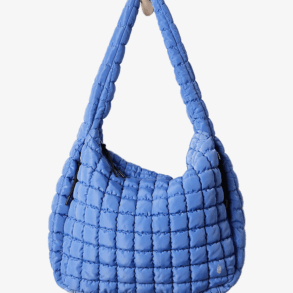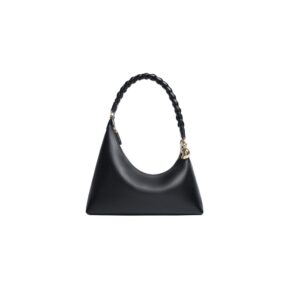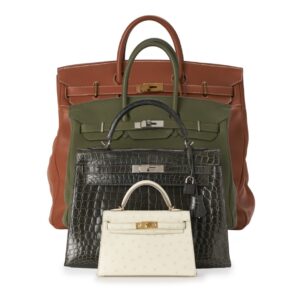Apr 15, 2025
IndexBox has just published a new report: EU – Handbags – Market Analysis, Forecast, Size, Trends And Insights.
The European Union handbag market is expected to see continued growth in demand, with a forecasted increase in market volume to 672M units and market value to $11.7B by the end of 2035. The market is projected to expand with a CAGR of +1.2% in volume terms and +1.8% in value terms from 2024 to 2035.
Market Forecast
Driven by increasing demand for handbags in the European Union, the market is expected to continue an upward consumption trend over the next decade. Market performance is forecast to retain its current trend pattern, expanding with an anticipated CAGR of +1.2% for the period from 2024 to 2035, which is projected to bring the market volume to 672M units by the end of 2035.
In value terms, the market is forecast to increase with an anticipated CAGR of +1.8% for the period from 2024 to 2035, which is projected to bring the market value to $11.7B (in nominal wholesale prices) by the end of 2035.

Consumption
European Union’s Consumption of Handbags
In 2024, handbag consumption in the European Union soared to 590M units, with an increase of 51% compared with the year before. The total consumption volume increased at an average annual rate of +1.6% over the period from 2013 to 2024; however, the trend pattern indicated some noticeable fluctuations being recorded in certain years. As a result, consumption attained the peak volume and is likely to continue growth in the immediate term.
The revenue of the handbag market in the European Union expanded significantly to $9.6B in 2024, growing by 14% against the previous year. This figure reflects the total revenues of producers and importers (excluding logistics costs, retail marketing costs, and retailers’ margins, which will be included in the final consumer price). The market value increased at an average annual rate of +2.7% over the period from 2013 to 2024; however, the trend pattern indicated some noticeable fluctuations being recorded in certain years. Over the period under review, the market hit record highs in 2024 and is likely to see gradual growth in the immediate term.
Consumption By Country
The countries with the highest volumes of consumption in 2024 were the Netherlands (139M units), Italy (108M units) and France (69M units), together comprising 54% of total consumption. Germany, Spain, Portugal, Hungary, Greece, Belgium and Malta lagged somewhat behind, together comprising a further 35%.
From 2013 to 2024, the most notable rate of growth in terms of consumption, amongst the key consuming countries, was attained by Malta (with a CAGR of +32.5%), while consumption for the other leaders experienced more modest paces of growth.
In value terms, the largest handbag markets in the European Union were France ($1.9B), Italy ($1.5B) and Germany ($1.4B), together comprising 51% of the total market. Hungary, the Netherlands, Spain, Portugal, Belgium, Greece and Malta lagged somewhat behind, together accounting for a further 39%.
In terms of the main consuming countries, Malta, with a CAGR of +28.5%, saw the highest growth rate of market size over the period under review, while market for the other leaders experienced more modest paces of growth.
In 2024, the highest levels of handbag per capita consumption was registered in Malta (24 units per person), followed by the Netherlands (7.9 units per person), Portugal (2.2 units per person) and Hungary (2 units per person), while the world average per capita consumption of handbag was estimated at 1.3 units per person.
From 2013 to 2024, the average annual rate of growth in terms of the handbag per capita consumption in Malta amounted to +30.1%. In the other countries, the average annual rates were as follows: the Netherlands (+18.2% per year) and Portugal (+4.9% per year).
Production
European Union’s Production of Handbags
After five years of decline, production of handbags increased by 2.7% to 123M units in 2024. Over the period under review, production, however, recorded a pronounced downturn. The most prominent rate of growth was recorded in 2016 when the production volume increased by 48% against the previous year. As a result, production reached the peak volume of 273M units. From 2017 to 2024, production growth remained at a lower figure.
In value terms, handbag production dropped to $8.1B in 2024 estimated in export price. The total production indicated a moderate expansion from 2013 to 2024: its value increased at an average annual rate of +3.7% over the last eleven years. The trend pattern, however, indicated some noticeable fluctuations being recorded throughout the analyzed period. Based on 2024 figures, production increased by +16.1% against 2022 indices. The pace of growth appeared the most rapid in 2016 with an increase of 54% against the previous year. Over the period under review, production attained the maximum level at $10.2B in 2018; however, from 2019 to 2024, production failed to regain momentum.
Production By Country
The countries with the highest volumes of production in 2024 were Germany (33M units), Italy (32M units) and Hungary (18M units), with a combined 67% share of total production.
From 2013 to 2024, the biggest increases were recorded for Hungary (with a CAGR of +9.7%), while production for the other leaders experienced more modest paces of growth.
Imports
European Union’s Imports of Handbags
Handbag imports surged to 664M units in 2024, jumping by 19% compared with the previous year. The total import volume increased at an average annual rate of +2.9% from 2013 to 2024; however, the trend pattern indicated some noticeable fluctuations being recorded throughout the analyzed period. The most prominent rate of growth was recorded in 2022 when imports increased by 33%. Over the period under review, imports hit record highs in 2024 and are expected to retain growth in the immediate term.
In value terms, handbag imports declined to $9.5B in 2024. Total imports indicated a tangible increase from 2013 to 2024: its value increased at an average annual rate of +4.5% over the last eleven-year period. The trend pattern, however, indicated some noticeable fluctuations being recorded throughout the analyzed period. Based on 2024 figures, imports increased by +37.5% against 2020 indices. The growth pace was the most rapid in 2018 with an increase of 17% against the previous year. Over the period under review, imports attained the maximum at $10.6B in 2023, and then dropped in the following year.
Imports By Country
In 2024, the Netherlands (163M units), Italy (127M units), Spain (86M units), France (71M units) and Germany (48M units) represented the largest importer of handbags in the European Union, constituting 75% of total import. It was distantly followed by Portugal (31M units), making up a 4.7% share of total imports. The following importers – Poland (29M units), Greece (19M units), Belgium (14M units) and Malta (12M units) – together made up 11% of total imports.
From 2013 to 2024, the most notable rate of growth in terms of purchases, amongst the leading importing countries, was attained by Malta (with a CAGR of +30.2%), while imports for the other leaders experienced more modest paces of growth.
In value terms, the largest handbag importing markets in the European Union were France ($2.1B), Italy ($1.8B) and the Netherlands ($1.4B), together comprising 56% of total imports.
In terms of the main importing countries, the Netherlands, with a CAGR of +15.2%, recorded the highest rates of growth with regard to the value of imports, over the period under review, while purchases for the other leaders experienced more modest paces of growth.
Imports By Type
Handbags with outer surface of plastic sheeting or of textile materials prevails in imports structure, reaching 569M units, which was approx. 89% of total imports in 2024. It was distantly followed by handbags with outer surface of leather, composition leather, or patent leather (40M units) and handbags with outer surface of vulcanised fibre or of paperboard (31M units), together mixing up an 11% share of total imports.
Handbags with outer surface of plastic sheeting or of textile materials was also the fastest-growing in terms of imports, with a CAGR of +2.7% from 2013 to 2024. At the same time, handbags with outer surface of vulcanised fibre or of paperboard (+1.4%) displayed positive paces of growth. Handbags with outer surface of leather, composition leather, or patent leather experienced a relatively flat trend pattern. From 2013 to 2024, the share of handbags with outer surface of plastic sheeting or of textile materials increased by +1.9 percentage points, while the shares of the other products remained relatively stable throughout the analyzed period.
In value terms, handbags with outer surface of plastic sheeting or of textile materials ($4.8B), handbags with outer surface of leather, composition leather, or patent leather ($4.3B) and handbags with outer surface of vulcanised fibre or of paperboard ($231M) constituted the products with the highest levels of imports in 2024.
In terms of the main imported products, handbags with outer surface of plastic sheeting or of textile materials, with a CAGR of +5.0%, saw the highest growth rate of the value of imports, over the period under review, while purchases for the other products experienced more modest paces of growth.
Import Prices By Type
The import price in the European Union stood at $14 per unit in 2024, falling by -24.3% against the previous year. Over the period from 2013 to 2024, it increased at an average annual rate of +1.6%. The growth pace was the most rapid in 2023 when the import price increased by 29%. As a result, import price reached the peak level of $19 per unit, and then declined sharply in the following year.
Prices varied noticeably by the product type; the product with the highest price was handbags with outer surface of leather, composition leather, or patent leather ($108 per unit), while the price for handbags with outer surface of vulcanised fibre or of paperboard ($7.5 per unit) was amongst the lowest.
From 2013 to 2024, the most notable rate of growth in terms of prices was attained by handbags with outer surface of leather, composition leather, or patent leather (+3.0%), while the other products experienced more modest paces of growth.
Import Prices By Country
In 2024, the import price in the European Union amounted to $14 per unit, falling by -24.3% against the previous year. Over the period from 2013 to 2024, it increased at an average annual rate of +1.6%. The pace of growth was the most pronounced in 2023 an increase of 29% against the previous year. As a result, import price attained the peak level of $19 per unit, and then contracted notably in the following year.
There were significant differences in the average prices amongst the major importing countries. In 2024, amid the top importers, the country with the highest price was France ($29 per unit), while Malta ($836 per thousand units) was amongst the lowest.
From 2013 to 2024, the most notable rate of growth in terms of prices was attained by Spain (+8.3%), while the other leaders experienced more modest paces of growth.
Exports
European Union’s Exports of Handbags
In 2024, after three years of growth, there was significant decline in shipments abroad of handbags, when their volume decreased by -31.9% to 198M units. Total exports indicated a perceptible expansion from 2013 to 2024: its volume increased at an average annual rate of +2.1% over the last eleven years. The trend pattern, however, indicated some noticeable fluctuations being recorded throughout the analyzed period. The pace of growth was the most pronounced in 2016 with an increase of 69%. As a result, the exports reached the peak of 327M units. From 2017 to 2024, the growth of the exports remained at a somewhat lower figure.
In value terms, handbag exports fell slightly to $22.4B in 2024. Over the period under review, exports, however, saw resilient growth. The growth pace was the most rapid in 2021 when exports increased by 30% against the previous year. The level of export peaked at $22.7B in 2023, and then declined slightly in the following year.
Exports By Country
In 2024, Italy (51M units), distantly followed by Spain (33M units), the Netherlands (25M units), Poland (20M units), France (18M units), Germany (15M units) and Portugal (9.3M units) were the largest exporters of handbags, together constituting 87% of total exports.
From 2013 to 2024, the biggest increases were recorded for Poland (with a CAGR of +12.7%), while shipments for the other leaders experienced more modest paces of growth.
In value terms, the largest handbag supplying countries in the European Union were France ($9.7B), Italy ($9.6B) and Spain ($1B), with a combined 90% share of total exports. The Netherlands, Germany, Poland and Portugal lagged somewhat behind, together comprising a further 7.3%.
In terms of the main exporting countries, Poland, with a CAGR of +15.6%, recorded the highest growth rate of the value of exports, over the period under review, while shipments for the other leaders experienced more modest paces of growth.
Exports By Type
Handbags with outer surface of plastic sheeting or of textile materials was the main exported product with an export of around 143M units, which recorded 64% of total exports. It was distantly followed by handbags with outer surface of leather, composition leather, or patent leather (64M units) and handbags with outer surface of vulcanised fibre or of paperboard (15M units), together achieving a 36% share of total exports.
From 2013 to 2024, average annual rates of growth with regard to handbags with outer surface of plastic sheeting or of textile materials exports of stood at +2.5%. At the same time, handbags with outer surface of leather, composition leather, or patent leather (+6.3%) and handbags with outer surface of vulcanised fibre or of paperboard (+1.4%) displayed positive paces of growth. Moreover, handbags with outer surface of leather, composition leather, or patent leather emerged as the fastest-growing type exported in the European Union, with a CAGR of +6.3% from 2013-2024. From 2013 to 2024, the share of handbags with outer surface of leather, composition leather, or patent leather increased by +7.7 percentage points.
In value terms, handbags with outer surface of leather, composition leather, or patent leather ($14.2B), handbags with outer surface of plastic sheeting or of textile materials ($7.2B) and handbags with outer surface of vulcanised fibre or of paperboard ($417M) appeared to be the products with the highest levels of exports in 2024.
Handbags with outer surface of plastic sheeting or of textile materials, with a CAGR of +8.5%, saw the highest growth rate of the value of exports, among the main exported products over the period under review, while shipments for the other products experienced more modest paces of growth.
Export Prices By Type
In 2024, the export price in the European Union amounted to $114 per unit, with an increase of 45% against the previous year. In general, the export price saw a buoyant expansion. The growth pace was the most rapid in 2017 an increase of 47%. Over the period under review, the export prices hit record highs in 2024 and is expected to retain growth in the immediate term.
There were significant differences in the average prices amongst the major exported products. In 2024, the product with the highest price was handbags with outer surface of leather, composition leather, or patent leather ($222 per unit), while the average price for exports of handbags with outer surface of vulcanised fibre or of paperboard ($28 per unit) was amongst the lowest.
From 2013 to 2024, the most notable rate of growth in terms of prices was attained by handbags with outer surface of plastic sheeting or of textile materials (+5.9%), while the other products experienced more modest paces of growth.
Export Prices By Country
In 2024, the export price in the European Union amounted to $114 per unit, increasing by 45% against the previous year. Overall, the export price enjoyed a buoyant expansion. The pace of growth appeared the most rapid in 2017 an increase of 47%. Over the period under review, the export prices reached the peak figure in 2024 and is expected to retain growth in the immediate term.
Prices varied noticeably by country of origin: amid the top suppliers, the country with the highest price was France ($536 per unit), while Portugal ($10 per unit) was amongst the lowest.
From 2013 to 2024, the most notable rate of growth in terms of prices was attained by France (+12.2%), while the other leaders experienced more modest paces of growth.
Source: IndexBox Market Intelligence Platform
This post was originally published on this site be sure to check out more of their content.






